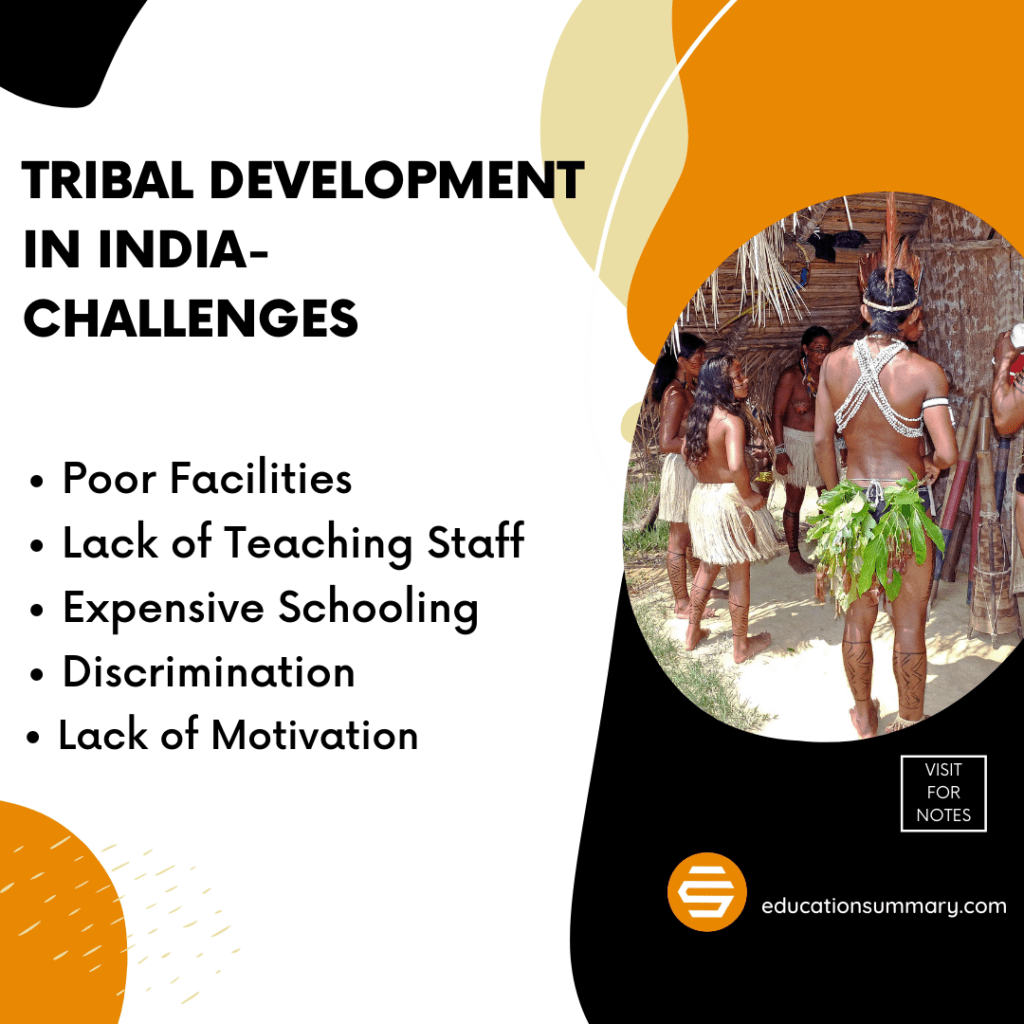Tribal Development in India- Challenges and Prospects in Tribal Education
Back to: Contemporary India and Education-Unit 1
The Imperial Gazette of India states,
“A tribe is a collection of families bearing a common name, speaking a common dialect, occupying or professing to occupy a common territory and is usually not endogamous, though originally it might have been so.”
Tribes are a group of individuals who share a common territory, religion, dialect, name, and culture. Their blood relationship and political organization unite them. They have a sense of unity due to the common characteristics they share. They are an endogamous group. There is a political organization of every tribe and a tribal chief who governs all the members of the tribe. The tribe members worship a common ancestor. The tribal society is homogenous, simple, undifferentiated, and simple.
Challenges in Indian Tribal Education
The challenges in Indian tribal education are as follows:
Poor Facilities
Those belonging to tribal groups generally belong to a poor socioeconomic background. As a result, they cannot afford to send their children to private schools. They have to send them to public schools where there is the inadequacy of proper facilities and learning resources.
Lack of Teaching Staff
In public schools, there is a lack of teaching staff which leads the learners to receive insufficient guidance.
Expensive Schooling
Tribal people coming from poor backgrounds cannot afford to enroll their children in private schools that facilitate proper and adequate learning resources because they are expensive.
Discrimination
Despite many steps being taken to eradicate discrimination, individual practices of discrimination and oppression towards poor tribal communities are still prevalent.
Lack of Motivation
Tribal communities focus more on cultural practices than education. Therefore, children belonging to such communities may go through a lack of motivation and encouragement to pursue education.
Prospect of Tribal Education in India
To pay more attention to tribal education in India, The Ministry Of Tribal Affairs was established. It focuses on developing an integrated approach for the overall development of scheduled tribes effectively in a planned and sequential manner. Residential schools, referred to as ashram schools, have been developed to foster the education and care of tribal children. There is an estimate of 892 centrally-sanctioned ashram schools across India that facilitate boarding and lodging for these children till the completion of their secondary education. Aside from this initiative, 197 Eklavya Model Residential Schools on the lines of KGBVs and Navodaya Vidyalayas have been established by the department.
According to Bogardus,
“The tribal group is based on the need for protection, on ties of blood relationship and the strength of a common religion.”


